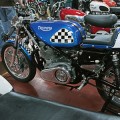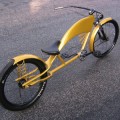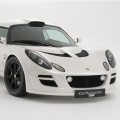The Progressive International Motorcycle Show rolled into the San Mateo Expo Center a couple weeks ago. The conference halls were filled with the usual suspects: Harley, Ducati, Kawasaki, Yamaha, Suzuki, Honda and Triumph. You could almost hear Steppenwolf’s “Born to Be Wild” playing in everyone’s head at the Harley exhibit.
It wasn’t all new toys, though. A large portion of the show was dedicated to historic motorcycles that paved the way. There were some very early Harley machines on display: a Vincent Black Shadow, a Honda CX series Turbo and even Suzuki’s rotary-powered bike.
Some of the machines on display simply defied any stab at definition. At first glance, the new Norton seemed like a ‘60s cafe racer. In fact, Norton has returned, and will be (with luck) available on this side of the Atlantic within a year.
The various Japanese manufacturers took the majority of show-room space and presented the most varied product lines. Honda, Yamaha and Kawasaki displayed their flagship models next to smaller-displacement cruisers and moto-cross offerings.
The aesthetic here is heading toward more robust-looking machines that push the limits of performance. The superbikes, for example, boast ever-growing displacement and power-to-weight ratios that should probably only be allowed on airplanes.
One of the most surprising machines displayed was the Can-Am, a trike manufactured under the umbrella of BRP USA. It shared the spotlight at BRP with Evinrude, Sea-Doo, Ski-Doo, Lynx and Rotax. Most enthusiasts will recognize Rotax as the Austrian engine and drive-train manufacturer of some note, but they probably won’t recognize a Can-Am as a motorcycle. In fact, it’s not. The Can-Am has two wheels up front and one in the back, and only resembles a motorcycle in the fact that it has handlebars, and the rider straddles it. They are fast and include technologies that make them very manageable and safe.
Although the multitude of manufacturers at the show should have satisfied anyone’s curiosity for design, the custom bikes took imagination to another level.
Some of them looked like futuristic bobbers yet sported power plants from days gone by. Other customs resembled something from the set of Akira, and some gave the impression they performed better standing still than on the road.
There was even a custom Harley Davidson Topper scooter, with pin striping and a paint job that probably cost more than the machine itself.
With Supermoto racers vying for positions just outside the conference halls, and demo rides available from Harley, Yamaha and Kawasaki across the parking lot, the show did what it was supposed to do: showcase motorcycle culture in all its forms and give riders a chance to check out all the manufacturers’ lineups.
If anything, the Progressive International Motorcycle Show is a huge time saver, which allows riders to explore their GAS (gear acquisition syndrome) and spend more time riding what they want than thinking about what they want to ride.
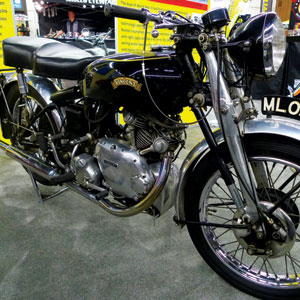
 South First Fridays Preview
South First Fridays Preview 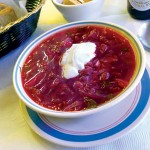 Review: Soup Bloc
Review: Soup Bloc 